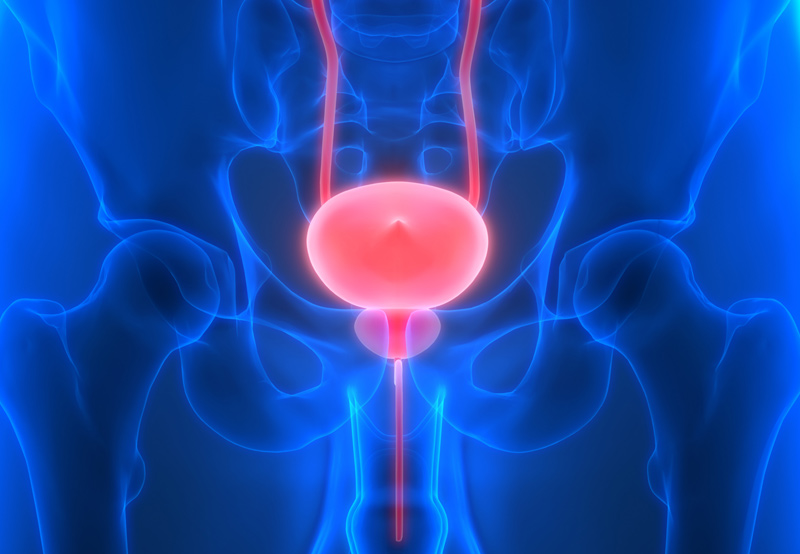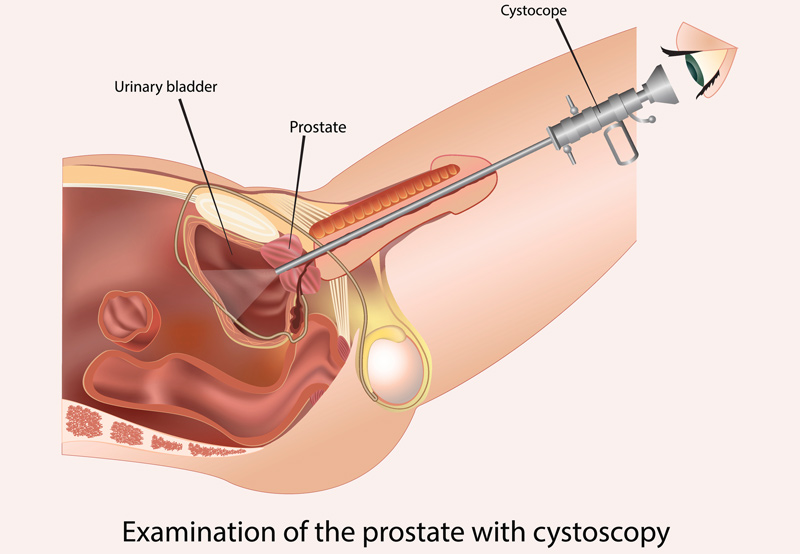

Bladder neck contracture (BNC) is a complication of benign or cancerous prostate surgery or radiation to the lower genitourinary tract. Scar tissue may form at the junction of the bladder outlet and the prostate or after complete removal of the prostate at the junction of the bladder outlet and the urethra, called anastomosis.
During surgery to remove the prostate, the bladder neck, which had been connected to the prostate, is reconnected to the urethra. Scar tissue at the connection site may cause the bladder and urethra to narrow or close completely.
Symptoms of Bladder Neck Contracture
Symptoms of BNC typically arise within three to six months after prostate surgery. An early sign is a gradual reduction in the flow of urine. Eventually, the patient is unable to urinate. Or, he may experience overflow incontinence when the bladder becomes very full.
Additional symptoms include:
- A need to push to start urinating
- Urine stream that starts and stops
- Delay in the onset of urination (after feeling an urge to urinate)
- Slow or diminished force of urine stream
- Feeling unable to completely empty the bladder

Causes of Bladder Neck Contracture
The exact cause of the complication is unknown, but one possible cause is a gap in the surgical connection that leads to a blood clot (called a hematoma) or any other reason that compromises healing underneath or between the stitches. This can cause the stitches to break or tear, filling the gap with fibrotic or scar tissue that leads to bladder neck contracture.
Another potential cause of BNC is poor blood supply to the anastomosis. Very tight stitches can cut off blood vessels and reduce blood supply to the connection site. Conditions like diabetes and heart disease may also contribute to BNC, since they’re associated with poor blood flow.
Risk Factors For BNC
The risk of developing BNC include:
- Patient history of diabetes and/or coronary artery disease
- Obesity
- Poor surgical technique
- Post-surgical complications, such as prolonged urine leak, hemorrhage, and anastomotic disruption
- Old age
- History of smoking
- Primary cancer treatment
Diagnosing Bladder Neck Contracture
To diagnose BNC, a physician may need to perform a cystoscopy. During the procedure, a thin long instrument with a small lens and light at one end and an eyepiece at the other will allow the physician to visualize the connection site. The physician will administer local anesthesia before passing the cystoscope through the urethra and into the bladder. Sterile water or saline may be used to fill and stretch the bladder and improve the view. The entire procedure takes about two minutes.
In other cases, the physician may order a cystourethrogram to check for structural problems in the urethra or bladder. A urinary catheter will be inserted into the bladder through the urethra and a contrast material will be delivered into the bladder to obtain x-rays. If the x-ray is taken while the patient is urinating, then the test is called a voiding cystourethrogram.
Minimally Invasive Treatment Options for BNC
The primary treatment for BNC is urethral dilation. During the nonsurgical procedure, tubes of increasing diameter are inserted through the urethra to gradually widen it and allow a urinary catheter to be inserted. The catheter will be used to drain urine from the bladder.

